The technical term for yellowing leaves is chlorosis and is caused by a lack of chlorophyll in the leaves. There are quite a few reasons why this may happen. Sometimes it’s natural and other times it’s your plant trying to tell you it’s not happy.
Cannabis plants don’t speak English, but if you pay close attention you can figure out what they’re trying to tell you. Yellow leaves are one way they can tell you there’s a problem.
Let’s figure out what’s causing chlorosis in your plants.
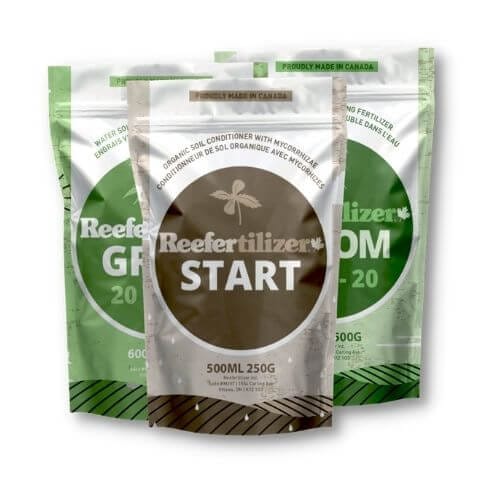
Reefertilizer® Complete Cannabis Nutrient Kit
Feeds up to 8 plants
Easier To Measure, Mix, & Feed
Fast 1-2 Day Shipping CAN + USA
Original price was: $84.95 CAD.$79.95 CADCurrent price is: $79.95 CAD.Add to cart
Diagnosing Yellow Leaves on cannabis plants
There are many cause for leaves on a plant to turn yellow. The first step is to narrow down the possible causes by investigating the plant. The first thing we should take note of is the location of the yellow leaves on the plant. Are the yellow leaves at the bottom of the plant or is it the new growth that is being affected?
Lower Cannabis Leaves are Turning Yellow
When the lower fan leaves are turning yellow, it could be a good indicator your plant isn’t getting enough nitrogen. The reason we know this is because nitrogen is considered a “mobile” nutrient. This means that when the plant is deficient, nitrogen in the lower leaves will mobilize to help new growth. This type of yellowing will start at the leaf tips and slowly move down to the stem.
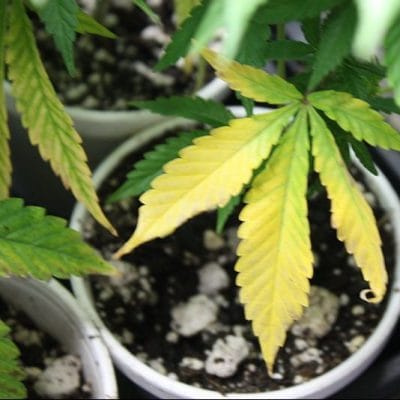
Cannabis roots can only absorb nitrogen when the conditions are right. Incorrect soil pH and soil that is too dry or wet can slow or completely stop the plants’ ability to metabolize nutrients. If there are only a few of these yellow leaves near the base of your plant then the yellowing might also be a natural process of the plant shedding leaves it no longer needs.
New Growth Leaves Turning Yellow
When the uppermost sets of leaves are beginning to yellow the first thing is to check for light burn. Tips of leaves will turn yellow when they are getting to much heat from a light. Place your hand just above the upper most leaves, if it gets uncomfortably warm or hot then your lights are too close.
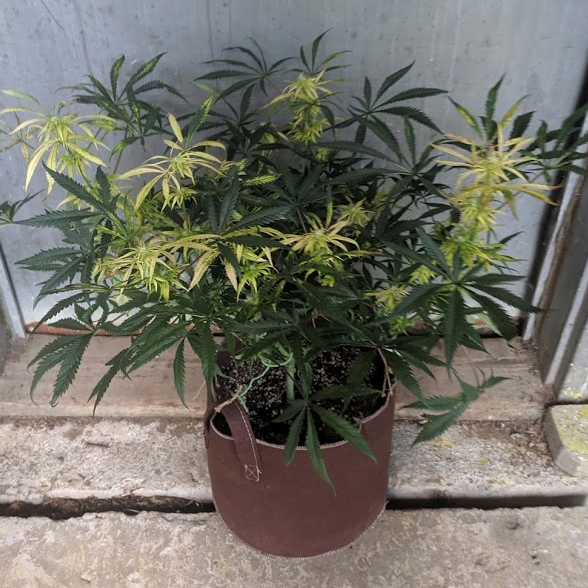
If you can rule out light burn then it might be a lack of nutrients like iron. Unlike nitrogen, iron is an immobile nutrient. Once iron is absorbed by the plant, it stays where it is. New growth will lack iron and turn yellow as a result. Other times (usually near the beginning of flower) it could be a calcium / magnesium deficiency and adding some additional cal/mag will quickly clear up the yellow.
Learn to Grow Better Weed
Download our free guide to growing amazing cannabis at home.
Click Here For More Info
Cannabis Seedling Leaves are Turning Yellow
If the leaves on your seedling or cannabis sprout are turning yellow it’s usually not a problem with nutrition. Seeds are packed with energy that will let them grow unassisted by nutrients for the first few weeks. The most common reasons your seedling leaves are turning yellow are bad watering habits or not enough light.
By giving your cannabis sprouts too much water the roots begin to “drown”. Cannabis roots need oxygen to facilitate growth, this is why well aerated soil is very important. When there’s not enough water, the roots will dry out and the seedling wilts and turn yellow.
Is your sprout growing tall and skinny and now the leaves are turning yellow? That is usually a sign of not enough light. You may need to upgrade your light source or provide more light for your baby plants.
A Word About Water Quality
It might be clear and taste wet, but not all water is the same. The treated city water that comes from your tap might be very different from the water at your cabin that comes from a well. Water contains minerals that are positively or negatively charged.
If the water you are using is “heavy”, meaning full of minerals, you might have some problems with your plant having nutrient deficiencies. The same problem would occur if the pH of your water was too high or too low. To oversimplify what’s happening…
- The pH around your roots affects which minerals are absorbed and how quickly.
- Roots absorb water through osmosis. When mineral levels around your roots are too high, osmotic flow reverses and draws water out of your plant.
When it comes to growing weed you should get to know the mineral content and pH of your water source. You will be using this water often and will likely need to make adjustments depending on what you discover.
The most accurate way to determine the level of salts and minerals in your water is by through its electrical conductivity (EC). Water that is rich in minerals will have higher electrical conductivity.
Mineral content can also be estimated as Total Dissolved Solids by Parts Per Million. This PPM estimate calculation is the EC level multiplied by a specific factor. You can find more info about TDS and PPM here
A TDS pen measures both of these things but it won’t tell you which minerals are in your water.
In most cases, tap water is fine for growing weed. Otherwise, you may need a water filter.
Improper Watering Habits
When you over-water your cannabis plants you prevent the roots from getting oxygen. This will prevent your plants from metabolizing nutrients and cause yellow leaves.
The leaves of an over watered plant will look droopy because they are full of water.
Under watering your cannabis plants will cause the leaves to wilt and turn yellow over time.
The solution is simple: adjust your watering habits. If you see over-watering symptoms, water your plants less frequently and vice-versa.
The rule of thumb is to water your cannabis plants once the top inch of soil is dry. Cannabis plants like soil that dries out a little between watering. Finding the right balance will depend on the size of the plant, the size of the planter, and temperature.
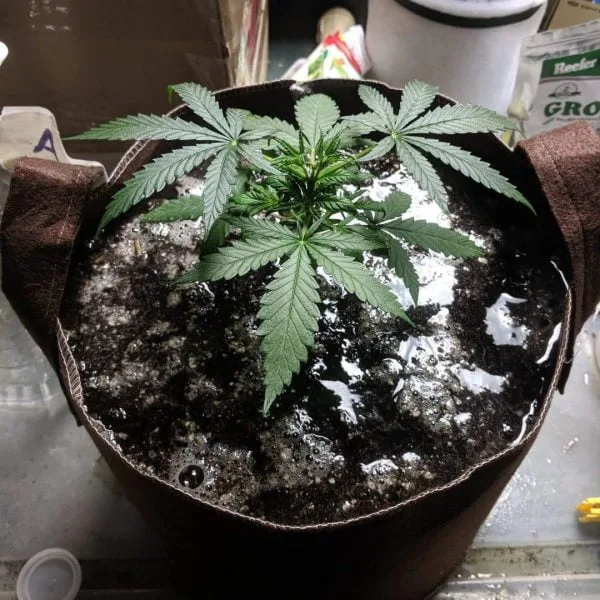
“Water your cannabis plants once the top inch of soil is dry.”
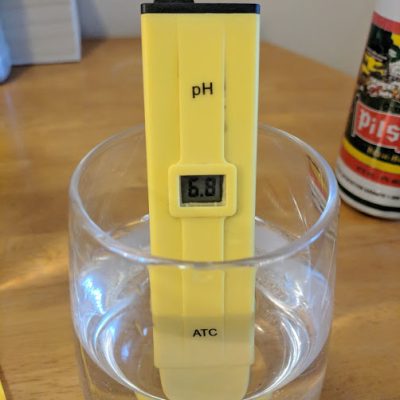
pH is Too High or Low
Another common issue is pH imbalance. If the pH of the water you feed your plants is off, they will have a hard time absorbing nutrients through their roots. pH is the measurement of acidity or alkalinity of a liquid, it’s determined by the concentration of hydrogen ions in the water.
If you want to get into the science of what pH is, here’s a great link.
In most cases, your tap water will have a pH around 7.0, but this will vary from location to location. Adding nutrients to your water can change the pH. Keep an eye on the pH of the water you use to feed your plants. You will get the best results from your cannabis grown in soil by maintaining a pH around 5.8 or 6. It makes sense when you realize the pH of rainwater is slightly acidic with a pH of around 6.0.
For hydroponics solutions you will want a slightly more acidic pH of around 5.5
By using a pH level measuring pen or kit you can monitor the acidity of what your feeding your plants. If your levels aren’t in the optimal range, add a base (pH up) or acid (pH down) to either raise or lower the pH.
Incorrect pH is the usual culprit for most cannabis related growing problems.
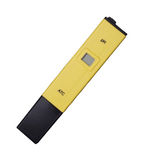
Light Burn
Are the tops of your plants turning yellow, crispy, and starting to curl? One reason could be light burn.
The leaves closet to the light source will be showing the most severe symptoms. The heat from your lights is frying these leaves damaging them.
Typically, the more powerful, high-intensity lights will result in light burn. LEDs usually give off the least amount of heat.
You will need to raise the lights a few inches to fix the problem. The optimal range is usually one or two feet away.
If your hand is uncomfortably hot where the light hits the leaves, then your leaves are also feeling the burn. The temperature at the canopy (uppermost leaves) shouldn’t go over 30°C (86°F).
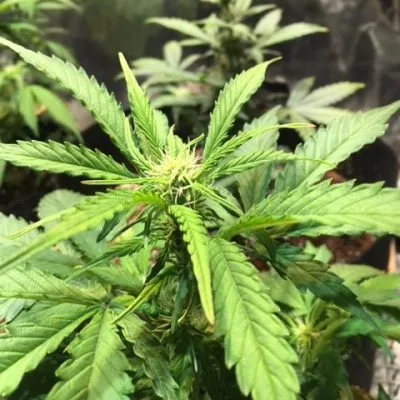
Cold Shock or Heat Stress
Next on the list is temperature. Normally, heat is going to be the enemy here, either from the lights or poor air circulation. If you’re growing outside or in your basement, a quick cold spell in the night could harm your plants as well.
For heat stress, the leaves will turn yellow and dry. At the other end, cold shocks, the plant will droop and turn yellow. Either extreme could kill your plants very quickly.
Keep a thermometer (or two) near your plants to check the temp. The ideal range is between 18°C and 28°C. Proper air circulation will keep the temperature balanced throughout the room and help the exchange of CO2 and oxygen.
Deficient Nutrients
If the pH is spot on and the plant is being watered correctly, then the most likely problem is nutrients (or the lack thereof). For chlorosis, the usual culprits are iron, nitrogen, magnesium, phosphorus, potassium, sulfur, or zinc.
Take note of where the yellowing occurs on the plant and the leaves. These are your clues to finding out what nutrients are deficient.
Using a fertilizer designed for cannabis is a good first start. Finding one that contains all the essential macro and micro nutrients cannabis needs is the easiest way to avoid deficiencies.
Nutritional needs may vary from strain to strain, but having those base line nutrients will save you a lot of trouble.
This is a reason why many growers love organic living soil. Good quality oil contains all sorts of micro-nutrients that are broken down by roots and microbes within the soil itself. With nutrient rich living soil you may even need to use less fertilizer.
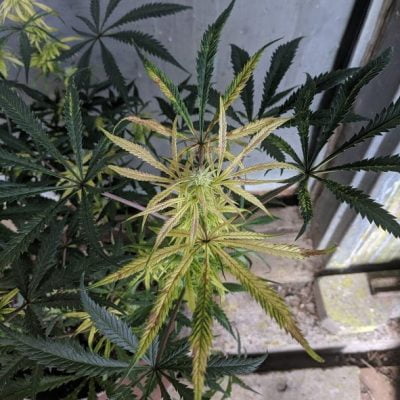
The plant in the photo is showing signs of an iron deficiency (and a few others as well). It was caused by a pH that was too high which locked out several nutrients.
Using too much fertilizer can also cause problems that would result in yellow leaves with burnt looking tips. Fixing over fertilized cannabis plants is simple. Flushing the soil with water will remove the build up of nutrients in the soil.
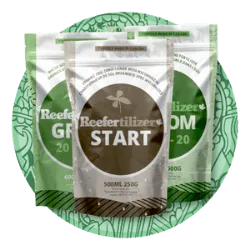
Save Time and Money With Nutrients That Were Designed With The Correct Balance Of Macro & Micronutrients For Cannabis In Veg And Flower.
When Are Yellow Leaves Natural
The cotyledons are the first set of leaves on a seedling. They are flat, broad, rounded, and don’t look like typical cannabis leaves. In most cases, these leaves will turn yellow and fall off a few weeks into your grow.
Leaves that aren’t getting enough light might begin to yellow. If you can’t find a way to manipulate the plant to allow light to penetrate to these leaves, you can just remove them.
Isolated yellow leaves can show up during the growing process. These are usually caused by the grower accidentally snapping a leaf the week earlier.
During the last few weeks of flower, some leaves will naturally turn yellow as the plants reach their final stage of life. Like leaves changing in the fall, the plant is now focused on reproduction and putting nutrient resources into seeds or flowers.
If you want to learn even more about growing good cannabis, we offer a free 40+ page guide full of images.
Now available on Amazon.
Sign up for our newsletter and download the digital copy today!
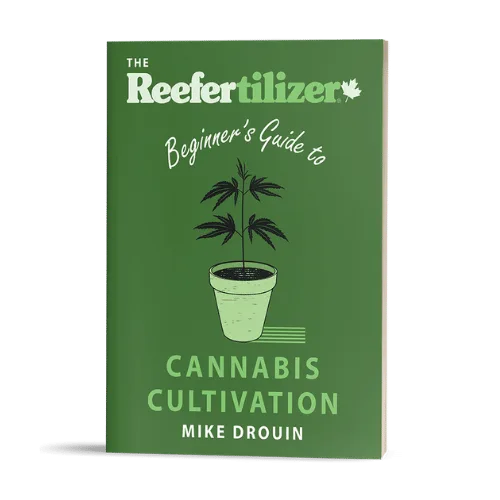
This guide will answer many questions about growing cannabis, like the following...
Selecting Seeds
Identify and Correct Problems
Maximize Yield
Much More...
Get a Chance to INSTANTLY WIN a Reefertilizer Nutrient Kit When You Sign Up.
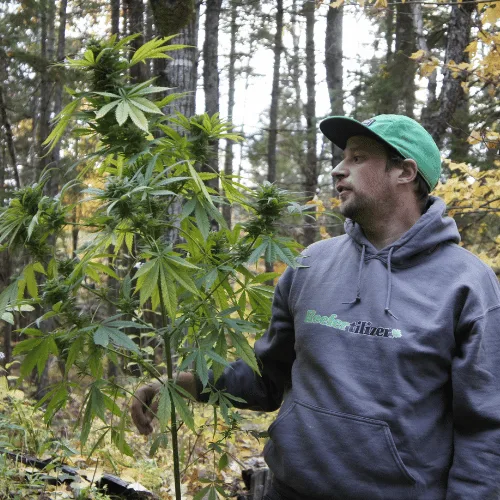
Mike Drouin is the co-founder of Reefertilizer. He’s an experienced craft cannabis grower and a writer of many articles regarding the process. Mike lives on Vancouver Island and enjoys cycling and camping and will sometimes combine the two.


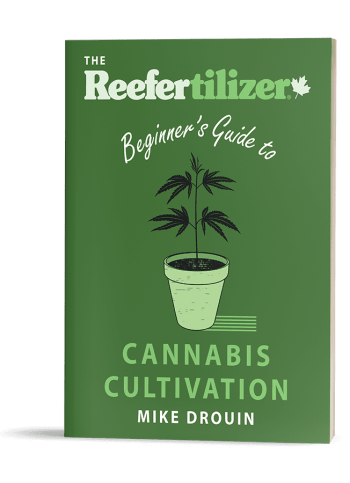

Comments are closed.